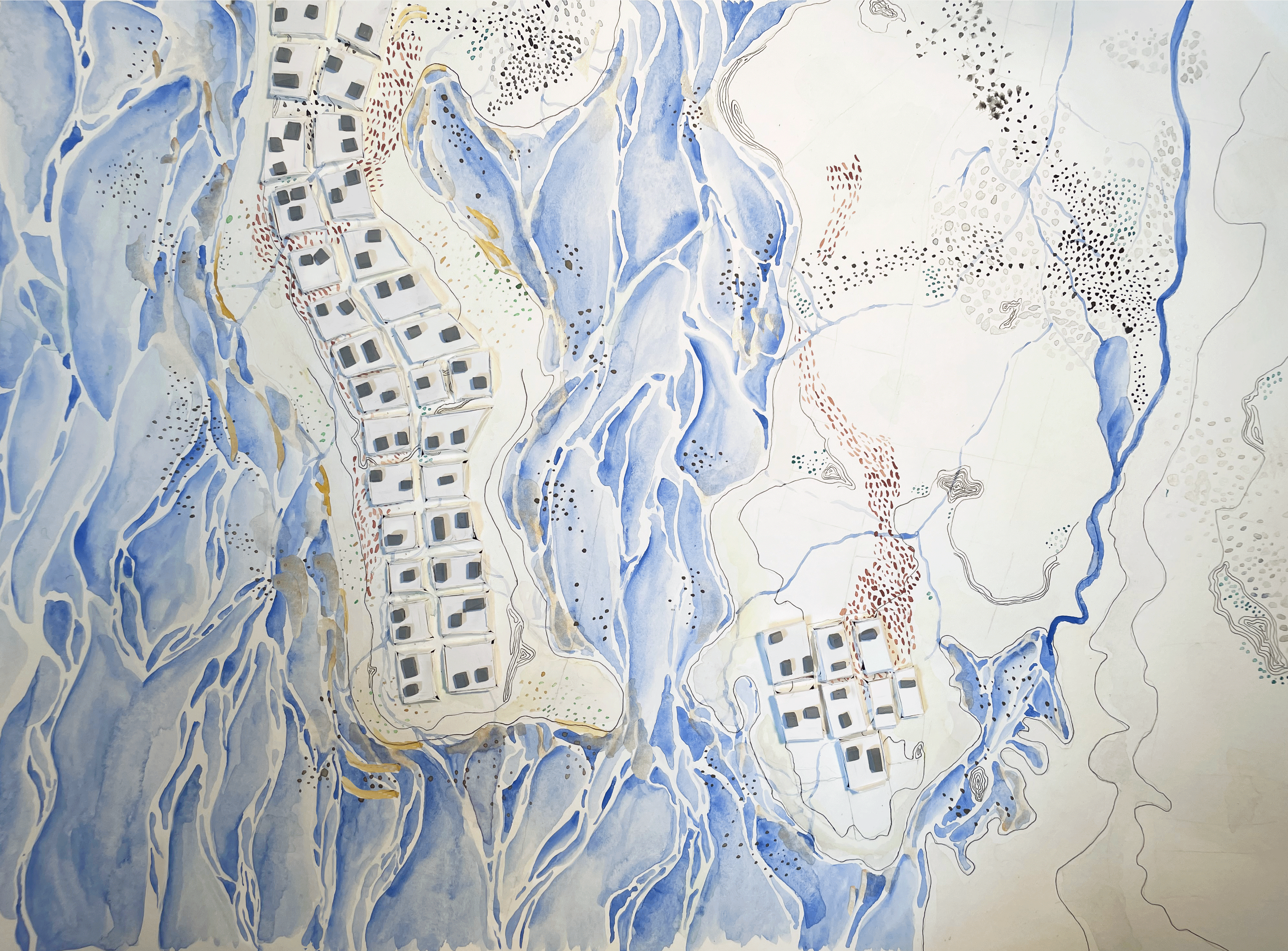
The built environment is built for resilience. It is curated to have prominence over natural systems, formulated to withstand, and rebuilt to withstand, once ruined. The power of the biosphere is subverted, however, building to protect against nature undermines opportunities within natural systems to protect us.
What opportunities exist to deprioritize owned property, to allow for a dispersal of stewardship, and acknowledgment of natural systems.
An instability of land suggests a necessity for flexibility in the built environment and policies surrounding it. Evolving shorelines, land migration patterns, and waterflow, opens doors for alternative methods of relating to the built environment, and its “sites.”
We currently alter groundcover and air quality, through invisible property lines acting as a barrier. Organized to release any responsibilities from an individual outside of what is owned. These lines of ownership, bulldoze directly through plant and animal paths and movement, ignoring natural systems to protect our homes. With soil types changing, more erosion and flooding, the system of property creates more risk for individual homes.
Individual stewardship is encouraged in areas that were naturally structured to symbiotically interact with larger systems.
In the Narragansett Bay Estuary, sea level rises are expected to be between 3-5 feet by 2100.
How would this coastal land react to climate change, if we removed the opportunity to own land property, and an individual or communal ownership revolved exclusively around features of the built?

Removing Property
Nestling the Built










